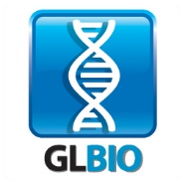Posters
Preparing your Poster - Information and Poster Size
Poster Schedule
Print your poster in Chicago
Poster Categories
View Posters By Category
Session A: (July 7 and July 8) | Session B: (July 9 and July 10) |
|---|---|
Short Abstract: Histone modifications (HM) play essential roles in gene expressions. Experimentally verifying multivalent state of HMs is challenging but crucial. The multivalent state can be marked by a combination of HMs. The objective is to build a model which can predict the class of the multivalent state of the HM. This experiment targets to use the data for machine learning algorithms so that predictions can be made that can lead to the claim that multiple combinations of markers can be involved for each change in gene expressions, rather than just one. First, a model has been built using Random Forest algorithm to predict the state. The Deep Neural Network (DNN) on the other hand trains faster with better accuracy of 98.9% . Categorical Crossentropy and adam optimizer provided superior results than other parameter settings. The closeness of accuracy between train, validation and test sets in the models show that over-fitting has not taken place and the choice of parameters are optimal. The model demonstrates that the multivalent state can be predicted with high accuracy within acceptable time using DNN, which can lead research to targeted disease treatments.
Short Abstract: Most drug-drug interactions (DDI) are not identified during clinical trials as the trials typically focus on single-drug therapies and ignore polypharmacy. As a result, drug-induced adverse events (AEs) triggered by polypharmacy surface post-approval. An in silico method to predict these DDIs - especially severe DDIs - a priori using existing drug profiles can help mitigate not only DDI-related AE risks but also reduce health care costs. We have developed a computational machine learning-based framework to predict DDIs and their severity (contraindications). Using DDI data from Drugs.com and CredibleMeds, we calculated pairwise drug similarities based on the properties of drugs compiled from various sources. Using a random forest classifier, we processed 119,053 DDIs with a synthetic minority oversampling technique to balance the class-unbalanced dataset and obtained scores of AUC = 0.82 and F1 = 0.75. We identified that most DDIs occurred from drug ATC class of antineoplastic agents, protein kinase inhibitors and anti-depressants. We also achieved a 0.78 F1 score on multi-class classification predicting the severity of drug contraindications. In summary, our framework can identify the DDIs and predict their severity from pairwise drug feature-similarity data and can, therefore, be useful in drug development and pharmacovigilance studies.
Short Abstract: Short tandem repeats make up more than 3% of the unlabeled human genome, and a significant fraction of both transposable elements and protein-coding DNA. They are also a significant source of false signal in genome annotation efforts. Though well-established software exists for annotating this repetitive content, incorporation into annotation pipelines is hampered by limited information on the statistical significance of repeat annotation. We present a prototype of a new tool called ULTRA (Ultra Locates Tandemly Repetitive Areas) for labeling tandem repeats. ULTRA implements a new hidden Markov model (HMM) for repetitive sequences, designed to support labeling of a wide range of repeat periodicities, accounting for complex patterns of substitution, insertion, and deletion. The robust HMM used by ULTRA allows for efficient and probabilistic detection of even highly degenerate short tandem repeats often missed by other tools. Compared to the current standard tool in the field (TRF), ULTRA is an order of magnitude faster and requires negligible RAM on typical genomic inputs. We demonstrate its effectiveness and discuss the incorporation into sequence annotation tools such as RepeatMasker, HMMER, and BLAST.












